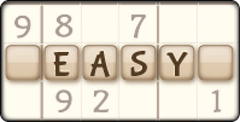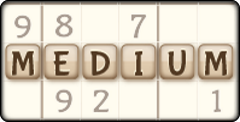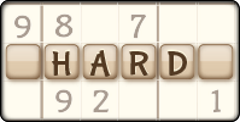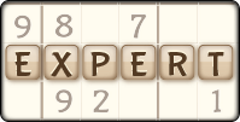Sudoku Strategy: Essential Tips to Improve Your Puzzle Solving
Sudoku is one of the most engaging brain games of our times and has gained steep popularity since its rise to fame in the 80s. Fantastic for fans of brain teasers like crosswords, Sudoku is a logic-based puzzle that, while seemingly complex, is surprisingly simple to get your head around using basic strategies.
Whether you’re new to the game or are a seasoned pro looking to hone your skills, we’ve got some great tips to help you improve your puzzle solving and start completing even complex sudoku puzzles with ease.

Master the Basics
Sudoku puzzles are ultimately logic puzzles. Even at a beginner’s level, basic strategies can help to further your skills. Strategies that can prove particularly useful for helping new players to master the game include –
- Cross-hatching: Focusing on each individual square in a 3x3 mini-grid and detecting any missing numbers allows players to cross check information from other grids to confirm what those numbers could be.
- Counting: If a partially filled row or column only has one or two remaining squares, counting the allocated numbers enables the discovery of missing numbers due to the rule of one (a rule stating numbers can’t be repeated within each 3x3 grid).
- Naked and hidden singles: Naked singles are one of the most useful sudoku strategies for beginners, and involve identifying cells that can only contain one number. Hidden singles occur when there’s only one possible position for a number. Starting with singles can be an easy way to begin filling a grid.
Avoid Common Mistakes
It should be possible for players of all levels to complete at least simple sudoku puzzles. If you’re struggling to get started or find you can’t advance your sudoku skills to the next level, you may be making common mistakes which could include –
- Guessing: There are many different number combinations on a sudoku grid, and one guessed wrong answer could unravel an entire puzzle. Always use logic when choosing answers so you can more easily spot patterns or employ sudoku strategies.
- Thinking too small: Focusing on individual 3x3 square groups can help in the early stages of a game. However, you should never forget the full grid, as all information provided is key to finding a solution, and your grids may all interact in different ways.
- Missing easy opportunities: New players are at risk of missing easy opportunities, which might include columns or rows that are only missing one number. These are great simple starting points, and could easily inform the rest of your grid.
Advanced Techniques
Sudoku is a relatively simple game but, like all logic-based puzzles, it is possible to play at an advanced level that’s far beyond the basics. Learning these advanced techniques is key to advancing your skill level, and can enable you to tackle even difficult or extreme level sudoku grids more easily.
The best advanced techniques to learn include –
X-Wing
The X-Wing Sudoku technique focuses on two rows and columns, rather than grids, and is possible when there are two lines with the same positions for two numbers.
Swordfish
The swordfish technique reduces potential numbers across three rows by looking for a number that appears twice in a single row three times, with that number also appearing in the same three columns.
Unique Rectangle
The unique rectangle technique involves a rectangular pattern in two squares where three of the corner blocks have the same numbers, allowing you to eliminate pair numbers for the fourth corner.
Effective Pencil Marks
Sudoku pencil marks involve noting down a possible option for a grid cell in the corner using a pencil. This is useful when there isn’t an obvious number to place in that cell, and can be strategically helpful. Effective pencil marks might include –
- Snyder notation: Marking in the corner of cells to identify when a number can only be in two possible positions within a 3x3 grid.
- Dot notation: Using a pattern of dots in each square to represent potential numbers 1-9.
- Patterns: Pencil marks can be effective for identifying patterns across an entire sudoku grid.
Tackle Difficult Puzzles
Pencil marks are a great way to tackle challenging sudoku puzzles, as they allow you to trial numbers and understand your grids more clearly. Other techniques that might prove useful for tackling difficult puzzles include –
- Scanning the board: Scan the board using one-direction and two-direction techniques before beginning to fill numbers, and make a pencil mark of anything that immediately stands out.
- Start with obvious singles: Naked singles, when a number can only go in one cell, and hidden singles, when there’s only one cell for a given number, are typically easy to identify and make effective starting points.
- Use the rule of one: The rule of one states that no number can repeat within a mini-grid, row, or column. Use this knowledge to identify additional, tricky singles once you’ve filled the rest of a sequence.
Practice Tips
The more sudoku puzzles you complete, the better able you’ll be to spot number patterns quickly. Some top practice tips for improving your sudoku skills include –
- Regular Sudoku practice: Completing daily online sudoku is key for enhancing your skills.
- Start with the easy stuff: Build your confidence by always filing easy sudoku solutions first, such as grids with only one or two missing numbers.
- Just keep scanning: The longer you look at a grid, the more you’ll inevitably notice across the numbers. Scan your grid any time you get stuck to move the game forward.
- Take your time: You may eventually be able to complete a sudoku in as little as ten minutes, but don’t push for this to start. Take your time during practice, and play around with techniques. It can even pay to put a puzzle aside and come back to it with fresh eyes if you get stuck.
Useful Tools and Apps
Sudoku is a timeless game that has become incredibly popular in recent years, meaning there are plenty of useful tools and apps out there to help improve your puzzle-solving. For instance, the Sudoku app Puzzaz provides a daily sudoku straight to your phone, as well as top tips for solving each puzzle. Equally, many players now use tools like sudoku algorithms, including backtracking, where each cell is tested for a valid number. Equally, algorithms like Knuth's Algorithm X and his Dancing Links technique work by rapidly identifying all possible sudoku solutions to inform your technique.
Here at 247Sudoku, we provide top-quality online sudoku puzzles with a fitting 9 difficulty levels for every player. Our ‘allow errors’ function even allows you to highlight any mistakes along the way, without time penalties, making our games great for beginners, and those looking to expand their skills.
Sudoku Levels
Seasonal Sudoku Games
More Games
Sudoku News
Disclaimer
DISCLAIMER: The games on this website are using PLAY (fake) money. No payouts will be awarded, there are no "winnings", as all games represented by 247 Games LLC are free to play. Play strictly for fun.





































